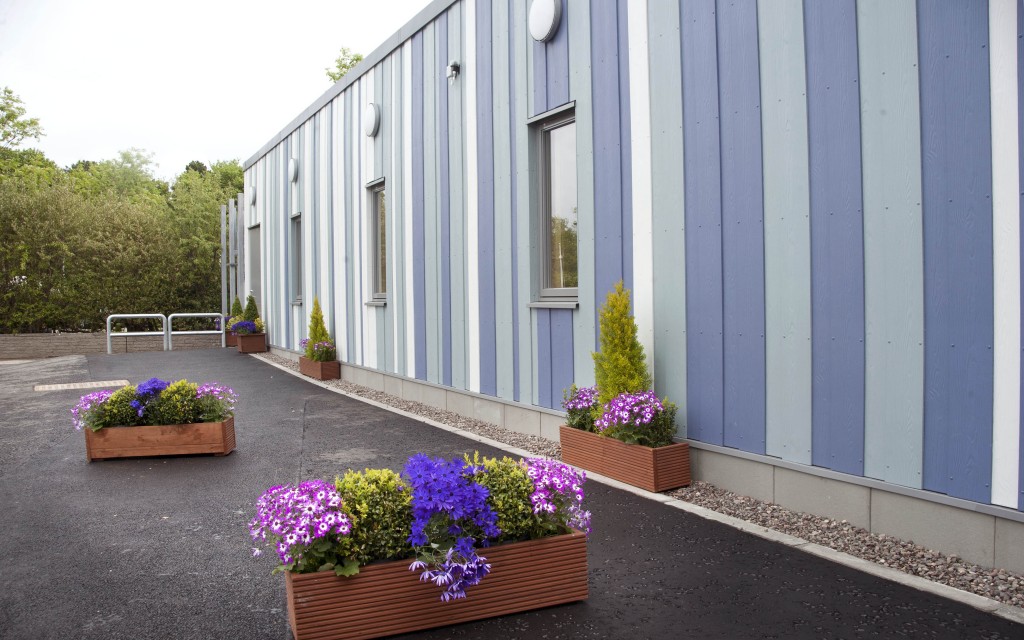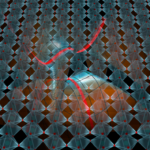 Our new paper on the surface layer of Sr2RuO4 has appeared in Advanced Materials (Early View). Check it out to see how checkerboard charge order and nematicity emerge at the surface of the enigmatic superconductor Sr2RuO4, a material that continues to surprise. Our work raises interesting questions as to what one can learn from the surface electronic structure about bulk instabilities of a material.
Our new paper on the surface layer of Sr2RuO4 has appeared in Advanced Materials (Early View). Check it out to see how checkerboard charge order and nematicity emerge at the surface of the enigmatic superconductor Sr2RuO4, a material that continues to surprise. Our work raises interesting questions as to what one can learn from the surface electronic structure about bulk instabilities of a material.
New paper: Superconductivity in non-centrosymmetric Sn4As3
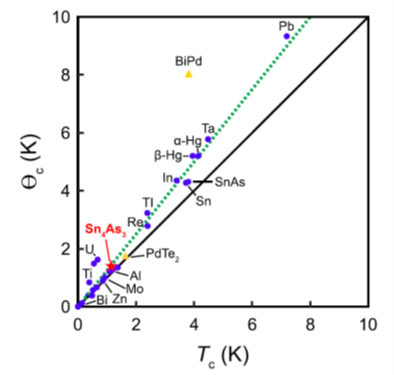 Our paper on the non-centrosymmetric superconductor Sn4As3 has been published in New Journal of Physics. Using our millikelvin STM, we show that Sn4As3 is a type-I superconductor, and have studied its electronic structure in detail. Check it out here.
Our paper on the non-centrosymmetric superconductor Sn4As3 has been published in New Journal of Physics. Using our millikelvin STM, we show that Sn4As3 is a type-I superconductor, and have studied its electronic structure in detail. Check it out here.
New paper: Manipulating magnetic order in FeTe
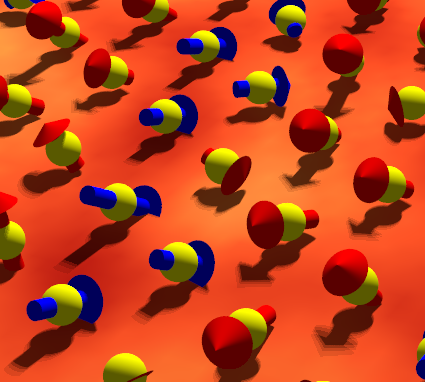 Our paper on imaging and manipulating magnetic order of FeTe in vector magnetic fields has appeared in Science Advances, see https://goo.gl/8f2v9c. It shows how we can use spin-polarized STM not only to investigate surface magnetic order, but also to manipulate it.
Our paper on imaging and manipulating magnetic order of FeTe in vector magnetic fields has appeared in Science Advances, see https://goo.gl/8f2v9c. It shows how we can use spin-polarized STM not only to investigate surface magnetic order, but also to manipulate it.
See also Christopher Trainer’s talk at the APS March meeting on this, on Monday, March 4 at 3.54pm (Talk C06:8).
Other talks by the group include talks on Quasiparticle Interference on minerals (by Carolina De Almeida Marques, talk A33.3 (Monday 8.24am) and on a strain-stabilized charge density wave in LiFeAs by Chi-Ming Yim, talk A10.4 (Monday 9.00am).
Highlight: Strain-stabilization of a new smectic order
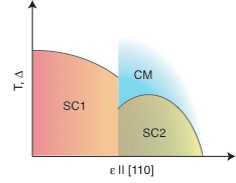 Our recent paper on the Discovery of a strain-stabilized smectic electronic order in LiFeAs is an Editors’ highlight in Nature Communications. Our work combines atomic-scale imaging by low temperature scanning tunneling microscopy with uniaxial strain. Straining the iron-based superconductor LiFeAs reveals the emergence of a new modulated phase, representative of a smectic electronic order. Tunneling spectra of the superconducting gap in this phase show a substantially modified superconducting order parameter.
Our recent paper on the Discovery of a strain-stabilized smectic electronic order in LiFeAs is an Editors’ highlight in Nature Communications. Our work combines atomic-scale imaging by low temperature scanning tunneling microscopy with uniaxial strain. Straining the iron-based superconductor LiFeAs reveals the emergence of a new modulated phase, representative of a smectic electronic order. Tunneling spectra of the superconducting gap in this phase show a substantially modified superconducting order parameter.
Our results highlight the importance of electron-lattice coupling in the iron-based superconductor LiFeAs.
Read more in our article in Nature Communications.
How can we see individual atoms – 100 Second Science series
If you ever wondered how one can image individual atoms – see this video from the 100 Second Science series at physicsworld.com.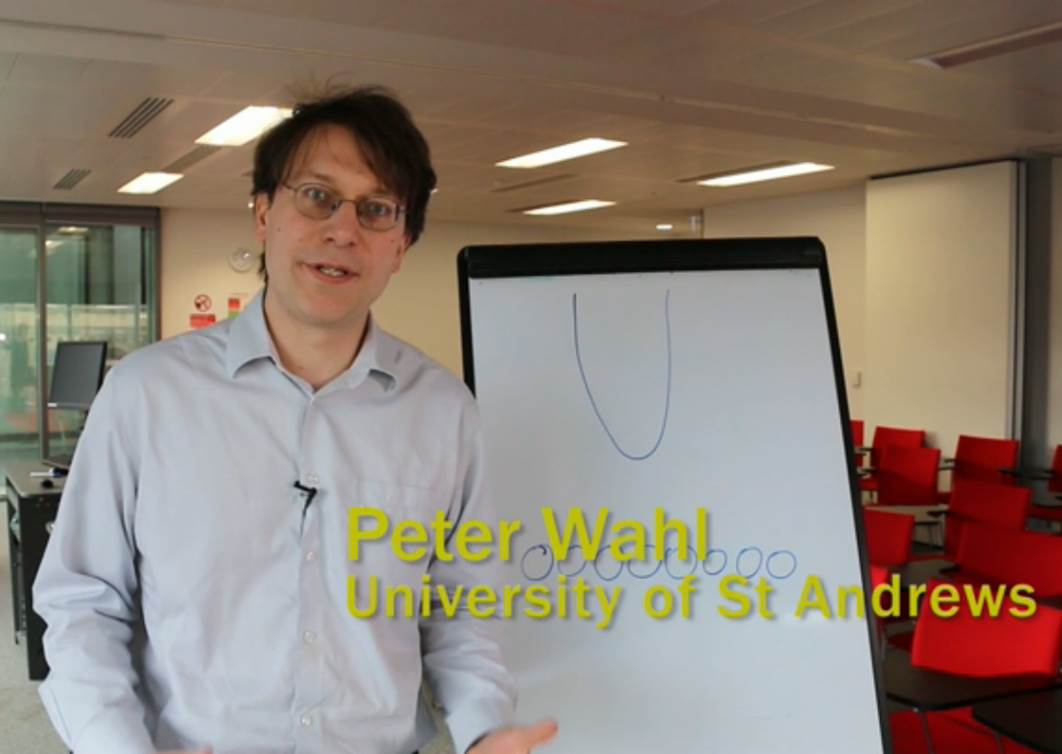
EQM2016 Conference
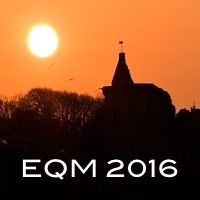
From 8th to 10th of June 2016, we are organizing a conference on Engineering Quantum Matter in St Andrews. The aim of this workshop is to bring together theorists and experimentalists to discuss how engineered quantum states can be exploited and designed for future technologies. The workshop connects strongly to local research activities at the University of St Andrews and links into a major collaborative research programme on topological protection and non-equilibrium states in strongly correlated electron systems (TOPNES). We have been able to attract a number of outstanding speakers. As there is only a limited number of places available, secure yours early.
We are grateful for funding provided by the IMPP, ICAM-I2CAM and TOPNES/EPSRC.
Now Recruiting: PhD Projects available
Are you a highly motivated student in your final year? Take a look at the PhD projects in the group offered at the School of Physics and Astronomy in St. Andrews. You will be working in brand new ultra-low vibration laboratories, which are unique in the UK, on custom-built cutting-edge scanning probe microscopes.
There is a range of possibilities for joining us as a PhD student, via the doctoral training center in condensed matter physics, the doctoral training grant at the University of St Andrews and the Chinese Scholarship program.
For further information don’t hesitate to contact Peter Wahl (wahl[at]st-andrews.ac.uk).
Highly motivated researcher wanted !
 We are recruiting and look for highly motivated postdoctoral researchers who are keen to do cutting edge research and work with multiple techniques. This position is within the collaborative programme grant TOPNES, for details please have a look at the Job advert AR1676ML (Research Fellow in Experimental Condensed Matter Physics).
We are recruiting and look for highly motivated postdoctoral researchers who are keen to do cutting edge research and work with multiple techniques. This position is within the collaborative programme grant TOPNES, for details please have a look at the Job advert AR1676ML (Research Fellow in Experimental Condensed Matter Physics).
In this position, as the successful applicant you will work with Peter Wahl and Phil King to study oxide surfaces and interfaces, specifically the electronic structure and low-density superconductivity in bulk and reduced-dimensional SrTiO3-based systems. The work will involve employing state-of-the-art equipment for scanning tunnelling microscopy and spectroscopy and angle-resolved photoemission spectroscopy in St Andrews, as well as working at international synchrotron light sources. In addition to using existing state-of-the-art spectroscopic probes, you will also work on integrating these with a new system for reactive-oxide molecular beam epitaxy for the study of atomic-scale SrTiO3-based designer heterostructures.
Ultra-low Vibration Labs Now Open!
Education Secretary Angela Constance officially opened our new ultra-low vibration (ULV) labs on 21 May. The event was attended by over 100 colleagues and guests. See full details and images here.
The St Andrews ULV labs are the most advanced in the UK and one of just a handful worldwide. The labs are designed to provide an ultra-low vibration environment for the custom-built microscopes developed in the group. We can now continue imaging and study of individual atoms in advanced materials, including superconductors which conduct electricity without losses, and quantum materials for next generation technologies.
Media coverage:
Meet us at Vortex 2015
You can hear about our work at Vortex 2015 in El Escorial, Spain. We’ll have two contributions:
- Monday, May 11th, 11:30-11:55: Peter Wahl: “Superconducting gap and vortex lattice of the heavy fermion compound CeCu2Si2“
- Thursday, May 14th, 10:40-10:55: Ana Maldonado: “Dirac surface states and superconductivity in noncentrosymmetric BiPd”

